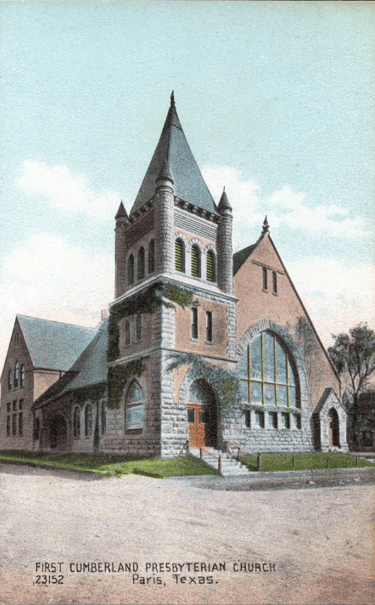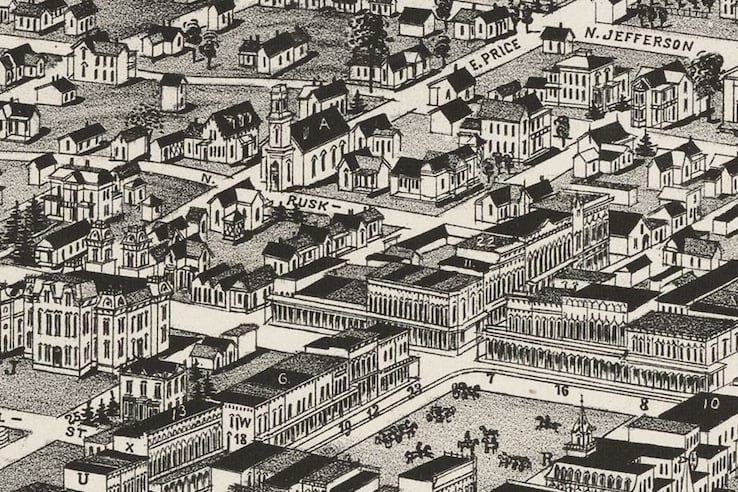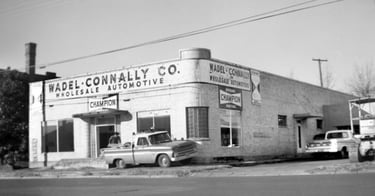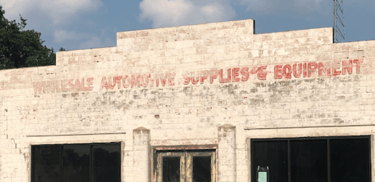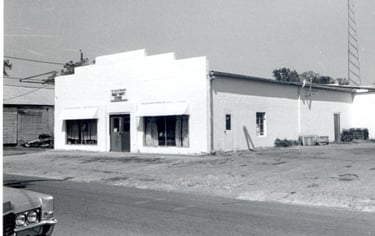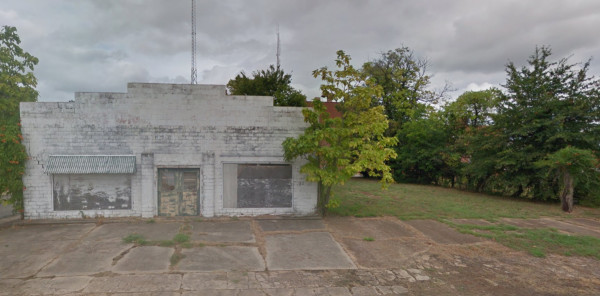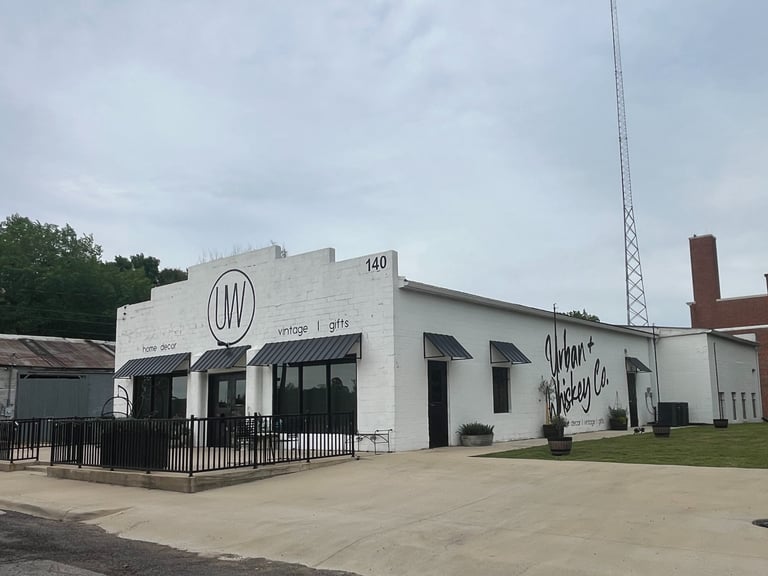This building has lived more lives than your uncle Billy’s tackle box—held together by duct tape, blind faith, and one lucky crank bait from 1983.
It all began in 1859, when the First Cumberland Presbyterian Church laid the spiritual foundation of this lot. They built their sanctuary right here, choosing this very soil to praise, repent, and (if rumors are true) make the finest chicken casserole west of Sun Valley. In 1891, growth demanded expansion, and a larger sanctuary was built next door.
In 1912, like any good startup, they underwent a rebrand—Central Presbyterian—and for four glorious years, sermons echoed across the land… until 1916, when a massive fire swept through Paris and took both buildings to the ground. Everything turned to ash—brick, pews, hymnals, and the preacher’s favorite pulpit, hand-carved by a man named Wesley Josephine who, according to legend, had webbed toes, the face of a choir boy, and a pet raccoon he called, ‘Harley’.
After the fire of 1916, a new church building was erected on South Church St (still standing today). The land here fell quiet—at least on paper. No official records. No blueprints. Just 34 years of mystery, whispers, and local legend. But if you ask anyone who’s lived in Paris long enough, they’ll tell you: the lot wasn’t empty. It was under the watchful, defiant reign of a girl named, Starr.
Starr claimed the charred land as her own personal kingdom sometime in the 1930s. She built forts out of scrap wood, ran bootleg lemonade stands with zero licensing, and held unsanctioned games of full-contact hopscotch. But the most famous story? That came the day a traveling preacher tried to pitch a tent revival on the lot. He arrived with banners, a tambourine, and holy ambition.
Starr met him at the edge of the property, arms crossed, eyes narrowed, and said, “Not today, Reverend. This land is for bigger things.”
When he asked who gave her the authority, she stood tall, raised one eyebrow, and shouted into the East Texas sky: “WHO’S THE MASTER?!” And from behind the hedges, a chorus of kids echoed back: “SHO-NUFF!” The preacher packed up and left before sundown. Starr stayed. Her legacy lingers. Some say you can still feel her energy in the wood beams.
Did any of that happen? Probably not. But this is Texas. You never know.
Then, in 1950, order returned.
The Wadel-Connally Hardware Company erected the brick-and-steel stronghold you stand in now. They sold wholesale automotive supplies across Northeast Texas. This very back room—the axe-throwing arena—was once a machine shop, filled with steel, oil, and the smell of men who didn't believe in safety goggles. The rafters above still carry their legacy: white hand-painted labels like ‘41 MER and ‘39 PLY, where belts, gears, and maybe a few missing hubcaps hung in reverent stillness.
Then came the fall.
In the 1970s, Wadel-Connally closed its doors, their Northeast Texas empire crumbling. Whether it was bad business, rising competition, or a tragic misunderstanding over metric vs. standard wrenches—we may never know.
The building was sold to the Salvation Army, who tried everything: thrift store, gym, makeshift living quarters with a full kitchen and bathroom. At one point, a Zumba class happened 30 feet from where someone else was pricing used pants. And somewhere in the mix, fire returned.
A second blaze—smaller than the great inferno of 1916 but mighty enough—swept through the building. The original flat roof was destroyed, and out of necessity (or pure architectural spite), a gabled roof was installed. Here’s the wild part: they reused some of the charred beams in the new framing. Yes, really. If you wander into Urban+Whiskey, our stylish neighbor and partner in vintage crime, look up—you’ll see the burned skeleton of this building's past woven into the bones of the present.
Eventually, in the early 1990s, the building was sold to a private owner who used it for storage. No records, no renovations. Just storage. For 30 years. Some say the ghosts of carburetors past wandered the hallways. Others say the entire space smelled like unsold inventory and Old Spice.
Then came 2020. A time of chaos in the world—but clarity for this forgotten corner of Paris. The doors creaked open, the dust stirred, and a vision took shape: not for worship, not for gears, not for treadmills… but for axes.
Now, Downtown Axe stands where history sleeps and mayhem awakens.
You're standing where congregations once knelt, where pistons once pumped, where donation bins overflowed, and where fire twice dared to claim dominion—and lost. Remember: you’re not just throwing. You’re participating in 166 years of smoke, steel, and resurrection.
This is not just an axe house.
It’s a cathedral of comeback.
A machine shop of memories.
A temple of precision, passion, and pine boards waiting to be split.
So grab your axe. Look up at the rafters. Smell the history.
Long Live the Unruly
